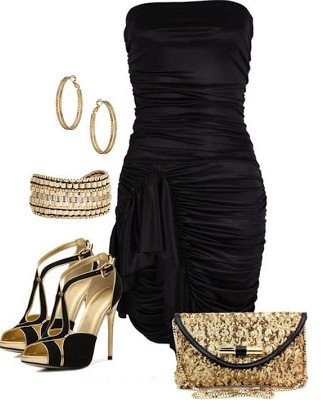Little Black Dress – Style One dress, Many Ways
For decades, women have had (or thought they had to have) a “little black dress” in their wardrobe. We often refer to it as the wardrobe “wild card,” since it can played almost any time, anywhere.
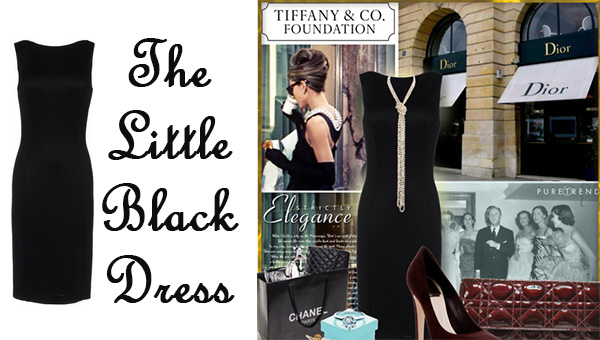
The little black dress is a wardrobe staple because it is so versatile. The neutral color and clean, simple design are not memorable in and of themselves, and can therefore be worn over and over without becoming tiresome, especially when skillfully accessorized. And the neutral color and design simplicity make the little black dress easy to accessorize, too. It can be dressed up or down to suit almost any occasion, or accessorized in almost any direction to suit almost any personality–with red for a bold look, with a multiplicity of brass chains with “ruby” beads for a warm ethnic look, with pearls or simple silver for a conservative look, etc.
If this isn’t enough to make everyone want one, consider the slimming effects that can be created with black. Off-black or even black hose with black pumps will slim and lengthen the legs as well as the total look. Add colorful or other attention-riveting accessories in the face and neck area to draw the eye up and further slim the body.
Now that almost everyone wants a little black dress, should everyone have one? Well… no… Not exactly. Black presents challenges for some, as not everyone looks their best in black. Many will have to get creative with accessories to make black work for them, and some should probably avoid black altogether. The good news is that the little black dress does not actually have to black in order to be clean, simple, versatile, and easy to accessorize.
“Her black dress, with its sumptuous lace, was not noticeable on her; it was only the frame, and all that was seen was she–simple, natural, elegant…”
–Leo Tolstoy
Anna Karenina
Check out all our ideas for styling the little black dress. We show you how one classic LBD can be styled in different ways. Click on each image to shop the outfit.
Should I Wear Black?
Today, black is almost universally recommended for those with cool, strong and/or high contrast personal coloration, particularly when the hair is black. Many women have been told they cannot wear black because they are “warm,” but in fact those with warm coloration and very dark hair are also flattered by black.
There is more than one kind of black. Just as there are innumerable varieties of red, black comes in true black, blue black, brown black, etc., and the effects of these different blacks can differ dramatically. The critical difference is that cool types are most flattered by true black to blue black, whereas warm types should tend from true black to brown black.
But there is more to it than warm versus cool. Black can overpower delicate coloration and create excessive contrast, but it is so versatile we wear it often enough to become desensitized to its effects, both good and bad.
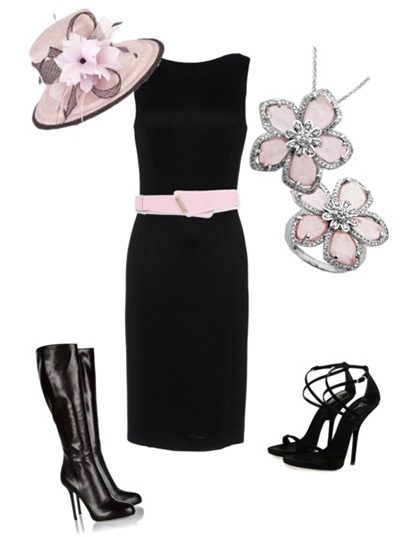
One way to restore your objectivity is with photos. If you have a friend who always looks great in black, have someone take some photos of the two of you standing side by side. The first shot should be head to toe. Take one, two, or more shots, moving in tighter and tighter. When you look at the photos, compare yourself to your friend. Ask yourself, “Do I really hold my own?” If you see that you are second best in black, perhaps you will be persuaded to try other options. If you’re still uncertain, poll your friends for their opinions.
Another method of regaining objectivity is to go without black for at least a month. Eventually, you will forget what you look like in it. Then, when you stand in front of a full-length mirror and try on black again, you may suddenly see quite clearly what you were unable to see before.
How Should I Wear the Little Black Dress?
Even if you’re not your best in black, no one is totally deprived of the benefits of the little black dress, because so often the critical question is not “should I wear black?” so much as “how should I wear it?”
The big difference between cool and warm looks is color schemes–those you create with black and your accessories and makeup. If you are cool, wear it cool, for example, with white, burgundy and silver. If you’re warm, wear it warm with cream, russet and gold.
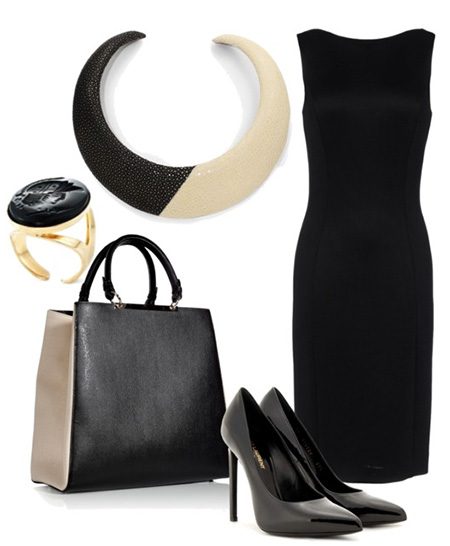
When black is worn with very light hues, it creates high value contrast–and an extremely dramatic look. Makeup is key here. High contrast looks require bold makeup. Bold combinations with very bright hues also require makeup.
There was a time when black was recommended for blondes–all blondes. Black creates high value contrast with light hair, and this was considered very striking. Then seasonal and other color systems came along and for the most part reversed this recommendation–virtually no blondes would be flattered by black, they said.
So, which is it? The answer is that it depends upon more than hair color. Blondes who are soft and cool are not flattered by black, but extremely vibrant warm types are. These are individuals who are so bright, it’s almost impossible to dampen their natural glow. Even so, warm types who are flattered by black should watch their color schemes carefully–taking care to “wear it warm”, for example, black with cream (not white), with gold (not silver), with warm, vibrant makeup (not cool), etc.
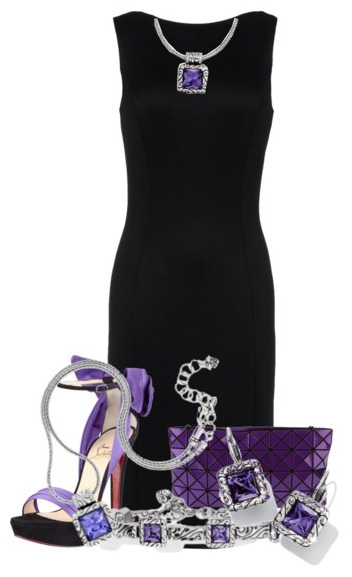
Much the same can be said for vibrant redheads. Wear it warm. Try it with a black-veined scarf with camel or rust (or both). Copper jewelry creates an exceptional look. Again, warm makeup completes the color scheme.
When Only Black Will Do…
Even those for whom black is not flattering at all can learn to wear it successfully, although it takes a bit of knowledge and skill. Since the purpose of the little black dress is to make life easier, something is lost in the bargain. Nevertheless, there are occasions and personalities for which only black will do. In these cases, gaining the skill and knowledge may be worth the effort.
Those with pale, delicate, light skin and hair have to be highly motivated to put together a great black dress look. Hard shine (such as patent leather) and the jet black of velvet are “out of range,” although this can be moderated somewhat with sheer and/or matte fabrics. Nevertheless, it still cannot be the very best look for these delicate types.
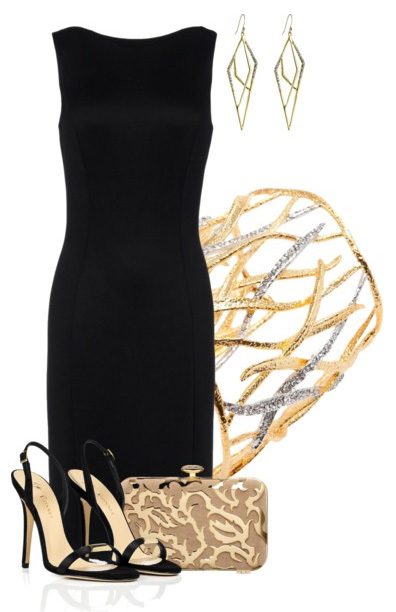
There is the option of just a little black. Cool, delicate women can use a subtle pattern such as a tweed in black, dove gray and off white. A herringbone in gold, tan or cream, and black, will work for delicate warm types. Black with slubs of a soft color will work if just a little softening and lightening are required. These techniques should create an overall look that is softened and of medium value. These soft black looks still permit black accessories, which will definitely make life easier!
Those with medium, muted and/or low contrast coloring cannot handle the extremely hard end of the scale either. They look their best in medium value colors and low to medium value contrast. The solution? Build a “bridge.” In other words, you can bridge the difference between your face and pure black. The bridge can be a scarf, a vest, or a jacket, in a pattern which includes your very best hues and/or neutrals at your very best contrast level, and flecks or accents of black. This brings black into a flattering range by a more gradual transition which avoids high value contrast, both with the face and with the black. As with all patterns, it should be in your very best scale. It should be of lines and shapes that harmonize with your body lines. It should suit your personality, i.e., express your personal style.
The Little Neutral Dress
If you really can’t wear black under any circumstances, or if you prefer not to go through the complexities of making it work for you, all is not lost. The little black dress does not have to be black. That’s right! In order to fill the bill, it simply must do what the black dress can do: It must not be memorable. It must be able to go almost anywhere almost any time and be simple in design so that it is easy to coordinate. It can be almost any genuine neutral or classic fashion “neutral,” such as navy.
For those who simply cannot wear dark values, “the little black dress” can be taupe (cool) or tan (warm). Gray is yet another option. Like black, it can be cool, balanced or warm.
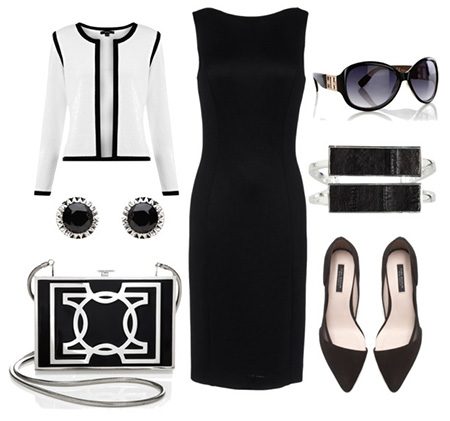
The same slimming effects can be achieved with darker neutrals as with black, although not as dramatically. Lighter neutrals do not slim as much as darker ones do. If you want to slim, but can’t go dark, go cool and dull. If you can’t go cool, go dull. Wear the intensities most flattering to your coloration by your face.
Having a little black dress simply means never being caught short, because you always have something presentable to wear when a dress is required. Because it is a backdrop it can be dressed up or dressed down with accessories. It can be accessorized to suit almost any occasion and your personality. Because it is not memorable, it can be worn over and over–year in and year out. And it is never out of fashion.

